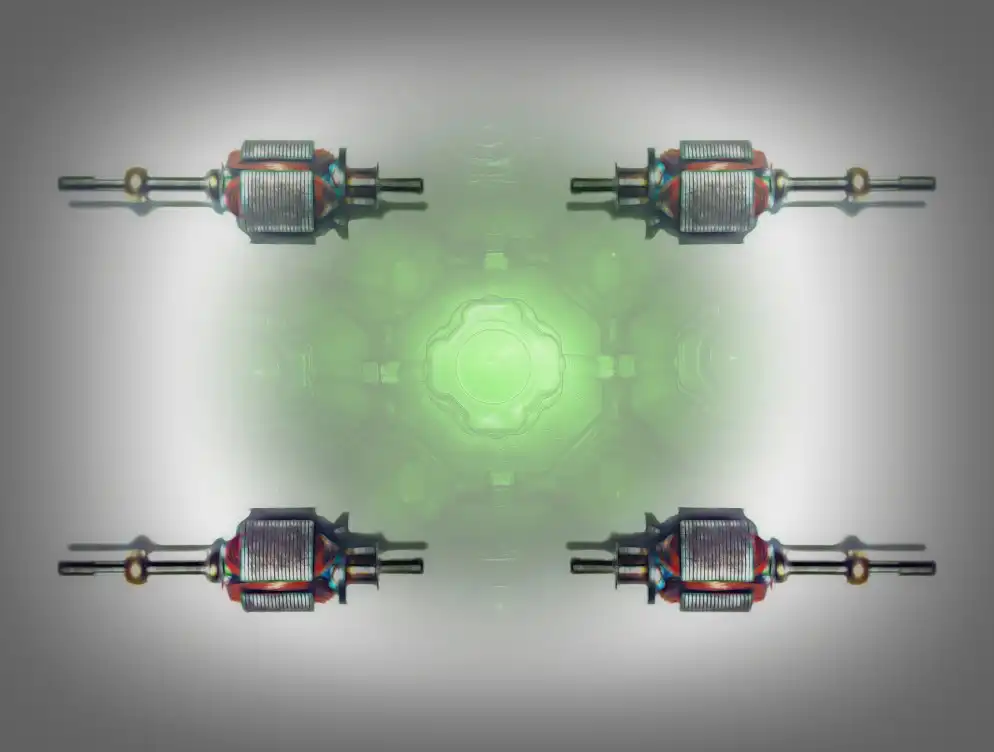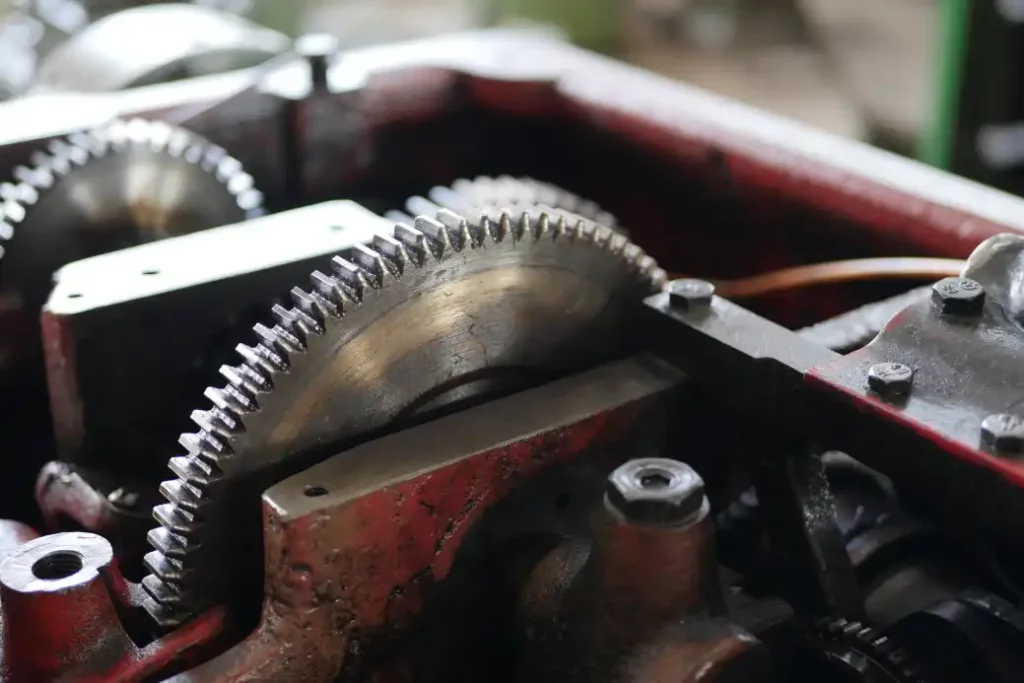Types of motors used in industries
- DC series motors
It has a variable speed and a high beginning torque. Electric locomotives, steel rolling mills, hoists, lifts, and cranes are examples of heavy-duty applications.
- Shunt DC motor
Constant speed line shafts, lathes, vacuum cleaners, woodworking machines, laundry washing machines, elevators, grinders, and small printing presses are all driven by DC shunt motors.
- Three-phase Synchronous motor
Ammonia and air compressors, motor-generator sets, continuous rolling mills, and paper and cement industries all employ 3-phase synchronous motors to drive continuously functioning equipment at a constant speed.
- Squirrel Cage Induction Motor
The motor is durable but straightforward, with a high overload capability. It has a low starting torque and a reasonably steady speed.
Water pumps, tube wells, lathes, drills, polishers, wood planers, fans, blowers, laundry washing machines, and compressors are examples of low and medium power drives when speed control is unnecessary.
- Double Squirrel Cage Motor
Compressor pumps, reciprocating pumps, huge refrigerators, crushers, boring mills, textile machines, cranes, punches and lathes, and other loads requiring strong starting torque are driven by double squirrel cage motors. It features a strong beginning torque, a vast overload capacity, and a practically constant speed.
- Slip Ring Induction motor
You can alter the slip ring induction motor’s speed to 50% of its typical speed. It features a vast overload capacity and a high beginning torque. Lifts, pumps, winding machines, printing presses, line shafts, elevators, and compressors are all examples of industrial drives that demand a lot of starting torque and speed control.

Types of motor connection
Standard three-phase motors There are six connection terminals on the terminal plate. The star or delta approach helps connect standard three-phase motors.
- Star Connection
By linking together similar ends of coils, either “beginning” or “finishing,” a star connection “Y” is formed. The line wires connect to the opposite ends, and the Neutral or Star Point is the common point. Power distribution and transformers employ this three-phase, four-wire arrangement.
- Delta Connection
The Delta or Mesh Connection is made by connecting the first coil’s starting end to the second coil’s ending end, and so on (for all three rings), forming a closed-loop or mesh circuit. Power transmission and transformers employ this three-phase, three-wire arrangement.
Best motor for lathe
The lathe’s size determines the type of motor used. Small “hobby” lathes use ac motors with fractional horsepower (1/8, 1/4) on domestic single-phase power.
The lathes that make crankshafts for big marine diesel engines – or the rotor shafts of massive alternators that generate megawatts of electrical power – must be huge, with hundreds of horsepower motors.
A DC shunt motor is a motor that runs at a constant speed. Lathe machines roll down iron parts at a steady pace, lowering diameters. Lathe machines need to run steadily, so DC shunt motors are necessary. A constant speed motor is also essential for other uses.
Constant speed line shafts, lathes, vacuum cleaners, woodworking machines, laundry washing machines, elevators, conveyors, grinders, and small printing presses are all driven by DC shunt motors.

Selection of different kinds of motors and their applications in industries
When choosing an industrial motor, several factors to consider, including the application, operational, mechanical, and environmental concerns. An ac motor, a dc motor, or a servo/stepper motor are the options. Which one to select is determined by the industrial use and any particular requirements.
Depending on the sort of load the industrial motor is driving, it will require constant or variable torque and horsepower. The torque and horsepower required are determined by the size of the load, the necessary speed, and acceleration/deceleration—mainly if it is fast and frequent. It’s also essential to think about the prerequisites for controlling motor speed and position.
Since there are many different motor types, there are many overlapping issues in industrial applications, so the market has pushed for motor selection to be easy. And this has shortened practical choices for motors in most implementations.
Brushless and brush dc motors, wound rotor motors, squirrel cage and servo, and stepper motors are the six most common motor types that fit most applications. The other engines are only necessary for specialized applications, but these motors are suitable for most applications.
Industrial motors ‘ principal uses are constant speed, variable speed, and position (or torque) control. Various industrial automation scenarios necessitate different applications and questions and their own set of questions.
Wood lathe motor size
2 HP lathes usually produce more strength, allowing you to shape heavier wood easily. As a result, it is the most outstanding alternative for large/industrial projects. In contrast, a motor with 1 HP is sufficient for light turning projects (or) for individuals who are not experts in this field.
A motor of at least 13 horsepower is required for a small lathe, especially if you plan to turn bowls, but bigger is ideal in this case. The motor usually comes with a three or four-step pulley and a matching one on the spindle, photo 19, to provide a speed range of approximately 400 to 2000 rpm. And you can accomplish this by moving a belt around on the pulleys to select the required speed.
Motor types and uses
- Stepper motors
“Stepper” refers to the motor’s steps with each signal pulse. It’s easy to use, costs less than servo motors, and has highly claimed accuracy. Its low-speed torque allows for a pulley reduction and timing belt, permitting the driving of several loads without using gears.
- Servo motors
Servo motors use Closed-loop circuitry to transfer data to the CNC machine. An encoder fixed with a sensor gets coupled to a standard DC or AC motor. Because of the sensor-fixed encoder, servo motors have excellent precision and resolution. The servo amp, which also records the steps taken, also powers the motor. Its high torque to inertia ratio allows it to accelerate loads quickly. Efficiency can exceed 90 percent with lighter loads.
- Linear motors
These electric motors have an unrolled stator and motor that generate linear force over the length of the device. They have a flat active section with two ends instead of cylindrical variants. They are usually more accurate and faster than rotatory motors.
- DC motor
DC motors were the first extensively used motors, and their initial costs (motors and drives) are often lower than AC systems for low-power units. However, when the power level rises, so do the overall maintenance expenses. You can change the speed of a DC motor by changing the supply voltage; they come in various voltages, the most common of which are 12 and 24 volts.
- AC motor
Compared to DC motors, AC motors have a significantly wider installed base and are more adaptable in many characteristics, including speed control (VSD – Variable Speed Drives). The current tendency in VSD is to introduce additional features and programmable logic control (PLC) functionality, which provides benefits but necessitates more technical knowledge during maintenance.
Electric motor for wood lathe
A wholly enclosed fan-cooled AC motor is valuable in most professional wood lathes. A three-phase motor with a digital phase converter can be controlled and reversed while running on single-phase electricity. The motor’s primary function in a wood lathe is to deliver energy. As a result, the machine can convert electrical power into mechanical energy and rotate the wood to shape it appropriately. The efficiency with which it completes the task depends on the horsepower.
- Pyrography Techniques for Beginners: Textures and Shading - January 23, 2024
- Troubleshooting Jointer Issues: Why is Your Jointer Not Flattening Wood? - October 11, 2023
- Unlocking the Secrets of Jointing to Increase Width - September 29, 2023